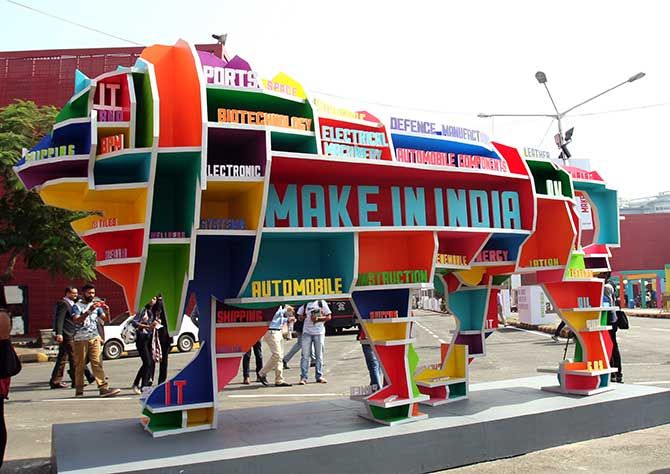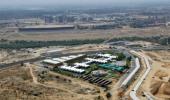
We need to dilute our fetish for growth and look at what it gets us, note Abheek Barua and Tushar Arora
Our previous article on employment in India (“Looking for a job”, 26 May 2016), highlighted three issues.
First, ramping up the share of manufacturing in its current avatar might not be adequate to absorb the large increase in the work force or the so-called demographic dividend that India is receiving.
For historical reasons India’s industrial sector has been both skill and capital intensive and misaligned with its comparative advantage.
In any case, the experience of other peer economies (the late industrialisers) shows that the share of this sector is peaking at much lower levels both as a share of gross domestic product as well as per capita income.
Thus, a manufacturing-driven employment model would entail bucking a 'global' trend and that in itself is challenging.
Third, the deficiency of skills is a major impediment in creating 'good' -- well-paying, productive -- jobs in the organised sector.
This problem cannot be corrected overnight or even over a five-year span.
A comprehensive solution involves a complete overhaul of our education and training model.
In this sequel we take a step back and ask a related question. If the objective of increasing the share of manufacturing is to ramp up productive employment opportunities, what should be made in India?
To answer this we consider three factors.
The first is the sensitivity or elasticity of employment to output growth in that sector.
The second factor relates to something called a “Prody score”.
It is the average per capita income for countries, already producing or exporting a particular product.
It captures the likely income gains if India also starts doing the same.
Finally we consider the issue of long-term competitiveness of the sector in the global economy (this is critical for its survival) through an index called the 'Density score'.
Shorn of the technicalities and jargon, the sectors that score high on all the three parameters would help in creating maximum employment and generating maximum income gains over time.
The three parameters are then combined into an index that can help rank the sectors.
The analysis throws up some interesting and some counter-intuitive results.
The textile sector, for example, is often perceived as one of the prime drivers of job creation.
However, according to our analysis the sector loses out both in terms of low per capita income generated and the likely decline in world market share that is likely.
Predictably, only a handful of sectors score high on all parameters.
These tend to be the somewhat high-tech but labour intensive sectors like computer hardware, optical instruments and electronics.
There are other sectors like that get a high index score despite faring poorly on one of the parameters.
For example furniture manufacture could offer large employment gains, go up in terms of global competiveness manufacturing but offer limited increase in per capita incomes.
This has implications for both the choice of sectors that need to be promoted through industrial policy as well as skill- building and training strategy.
Clearly policy-makers cannot sit on their hands and wait for the long term to arrive at a solution.
Thus, we need to think of a two-track “Make in India” model that balances the needs of employment creation in the short term with the imperative of moving up the supply chain over the long term.
For those sectors that get short-term priority, the skilling needs are relatively light and can be addressed within a five- to 10-year time frame. The second long track requires much more effort in terms of skilling.
It can come if we re-think of both our school and college education models.
This cannot be left to the private sector alone. This has to be driven by a new education policy that focuses on fundamental changes right from the primary education level.
We argue that that in order to tackle an impending crisis in the labour markets, “Make in India” will be have to be supported by 'Serve in India' and perhaps 'Farm in India'.
Much is made of the “knowledge industries” like IT and back-end services.
These provide limited employment. The heft of job-creation in services comes from sectors like construction.
Thus, at least, in the short term, they need to be encouraged.
Programmes like the 'Smart Cities' initiative, infrastructure building and critically housing has to be viewed through the prism of employment.
Here too, there are challenges.
Anecdotal evidence suggest that the use of labour-displacing capital equipment is increasing in infrastructure projects.
Models like community based infrastructure programmes that address the dual problems of infrastructure shortage and employment need to get more emphasis.
We need to take a call on how many young workers should be leaving their farms and seek opportunities in manufacturing and services.
Instead of obsessing over the old fashioned transition from agriculture to industry and then services, part of the solution to the demographic crisis lies in creating more productive jobs on farms themselves.
This calls for a diversification in the farm output mix (the move to horticulture has been successful in some parts) and large investments not only in physical assets but in areas like risk-management and forward linkages to food processing industries and remunerative markets, be they in exports or domestic retail.
Institutional changes like the unification of agriculture markets, an overhaul of the intermediation process between the farm gate and food plate also become critical.
Finally there is a need to dilute our fetish for growth and focus more on what growth fetches us in terms of job-creation.
For a start we need good quality and high frequency data on employment. The unemployment rate is a critical macroeconomic variable that economic policy-makers across the world fret over.
Unfortunately while we have a plethora of other economic indicators that are released regularly, this important indicator is sadly missing.
Abheek Barua is the chief economist and Tushar Arora is a senior economist at HDFC Bank. Views are personal
Photograph: A model on display at Make in India week celebration in Mumbai, February 2016. Sanjay Sawant/Rediff.com











